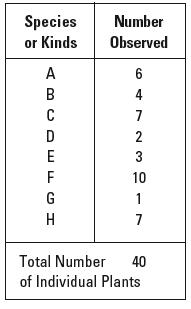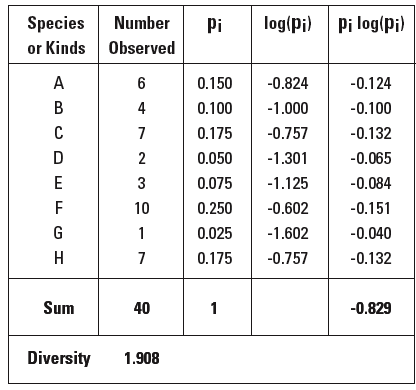Diversity is defined as the measure of the number of different species in a biotic community. Generally speaking, diversity is high when there are many different species in a community and and low when there are few. Comparing the diversity of two or more different biotic communities can give an idea of the comparative stability and health of those communities. Comparing and analyzing the results can be difficult if all you have to work with are lists of life forms from different sites. When scientists are faced with this problem, they often create an index. An index is a scale by which your object of study can be rated, and then compared to other things of the same type. A biodiversity index is a scale of the diversity of plant and animal species at your study site. Biodiversty is a widely used tool for estimating the complexity, stability, and thus general health of an ecosystem. One example of an index is a report card. Performance on a test or assignment places a student’s work in a range (for example, 80 to 83 percent). That range is then translated into a ranking on a scale (B–). Put simply, an index turns complicated and difficult-to-compare data—like school assignments or lists of life forms—into numerical data which are easier to analyze. The ideal way to measure diversity is to count every species in sight. However, this approach requires much time and considerable expertise in taxonomic classification. This worksheet describes how you can turn the data collected at the sampling plot into an index of biodiversity. You will calculate the biodiversity index using the data gathered at the study site. You can submit your biodiversity index value to the Biodiversity Project. |
||
Gathering Raw Data
|
||
The Biodiversity Formula
Biodiversity Index = –2.303 x sum of pi log(pi) |
||
Materials
|
||
Procedure
|
||


